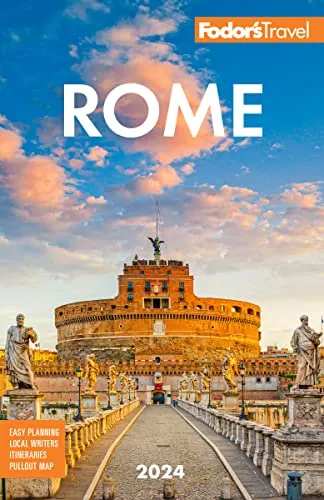Great Itineraries
A Great Southern Italy Itinerary
Come for the archaeological wonders, azure sea, and excellent Neapolitan fare.
Day 1: Naples
Fly into Naples's Aeroporto Capodichino, a scant 8 km (5 miles) from the city. Naples is classic Italy, and many visitors end up falling in love with its alluring palazzi and spectacular pizza.
Recharge with a nap and, after that, a good caffè—Naples has some of the world's best. You should be back on your feet in time for an evening stroll down the city's bustling shopping street, Via Toledo, to Piazza Plebiscito, before dinner and bed.
Day 2: Naples
Start the day at the Museo Archeologico Nazionale, budgeting at least two hours for its collection, before stopping for coffee at a café in Piazza Bellini. From here, head down Via dei Tribunali, crossing Via Duomo to see Caravaggio’s The Seven Works of Mercy at Pio Monte della Misericordia. Make your way back along Spaccanapoli with a brief stop at the Cappella Sansevero for a look at the pinnacle of Masonic sculpture. Continue on to the port and the Castel Nuovo and then past the Teatro San Carlo to the enormous Palazzo Reale in Piazza Plebiscito. Just beyond this is the Santa Lucia waterfront area, with the Castel dell'Ovo. Return to your hotel for a short rest before dinner and perhaps a night out at one of Naples's lively bars or clubs.
Logistics: This entire day is easily done on foot.
Day 3: Pompeii/Sorrento
After breakfast, pack your luggage, and head from Naples to Pompeii, one of Europe's true archaeological gems. If it's summer, be prepared for sweltering heat as you make your way through the incredible preserved ruins of a city that was devastated by the whims of Mt. Vesuvius nearly 2,000 years ago. You'll see the houses of noblemen and merchants, brothels, political graffiti, and more. Sorrento, the beginning of the fabled Amalfi Coast, is touristy, but it may well be the Italian city of your imagination: cliffhanging, cobblestone-paved, and graced with an infinite variety of fishing ports and coastal views. Stop here for a relaxing dinner of fish and white wine.
Logistics: Rather than rent a car, take the Circumvesuviana, a twice-hourly train to Sorrento that stops near the ruins at Pompeii’s Villa dei Misteri.
Day 4: Positano/Ravello
Positano, your next stop, is one of Italy's most visited towns for good reason: its blue-green seas, stairs "as steep as ladders," and white Moorish-style houses are all memorable. Walk, gaze, and eat (lunch), before heading on to the less visited, yet even loftier town of Ravello. This aerie "closer to the sky than it is to the sea" is an Amalfi Coast dream come true. Don't miss the Duomo, Villa Rufolo, or Villa Cimbrone before settling in for dinner in the sky.
Logistics: Sorrento to Positano is a 30-km (19-mile) jaunt, but the winding roads will draw it out for the better part of an hour. From Positano, Ravello is another slow 18 km (11 miles) to the east. The SITA bus is your best option. Motorists should be prepared to use low gears if driving a stick shift.
Day 5: Matera
Those with a car will have a bit of a drive from the Amalfi Coast; leaving Campania and entering Basilicata is generally a lonely experience. Little-traveled roads, wild hills, and distant farms are the hallmarks of this province, which has perfected the art of peasant food and the deep, dark aglianico wines to go with it. The lengthy journey to Matera is worthwhile, however, to see this beautiful ancient city full of Paleolithic Sassi (cavelike dwellings hewn out of rock). Spend the afternoon exploring them, then enjoy a relaxing dinner at one of Matera's excellent restaurants.
Logistics: It's a long haul from Ravello to Matera—if using public transportation you may find it easier to return first to Naples—but the effort is worth it, as Basilicata's landscape is so pretty.
Day 6: Lecce
Get an early start for your journey to the Baroque city of Lecce, which will mark your introduction to Puglia, the heel of Italy's boot. It's one of the country's best-kept secrets, as you'll soon find out upon checking out the spectacular church of Santa Croce, the ornate Duomo, and the harmonious Piazza Sant'Oronzo. The shopping, the food, and the evening passeggiata are all great.
Logistics: It's not far from Matera to Lecce as the crow flies, but the 2½-hour trip is more involved than you might think; patience is required. Those without a car should head to Bari, then take the train south. The best driving route is via Taranto, not up through Bari.
Day 7: Bari
The trip from Lecce to Bari is a short one, and many make a pit stop halfway at the beautiful hilltop town of Ostuni (dubbed the Città Bianca, or "White City"). Check into your hotel, and spend the morning and afternoon wandering through Bari's historic center. Finish the day with a good fish dinner.
Logistics: The connection in this segment is one of this itinerary's quickest and most straightforward: a direct train or the coastal SS16 for 154 km (95 miles) until you hit Bari.
Day 8: Bari/Departure
Bari's Aeroporto Palese is small but quite serviceable, with frequent connections through Rome and Milan. Plan on leaving with southern Italy firmly established in your heart as the best place to see the country as it once was—and be thankful that you were able to see it while it's still like this.
Logistics: Bari hotels offer easy airport transfers; take advantage of them. There are also regular trains from the central station to the airport.










